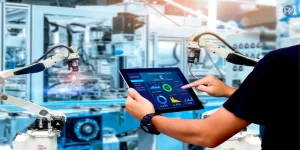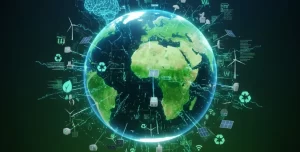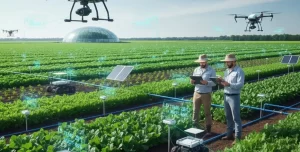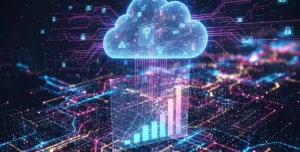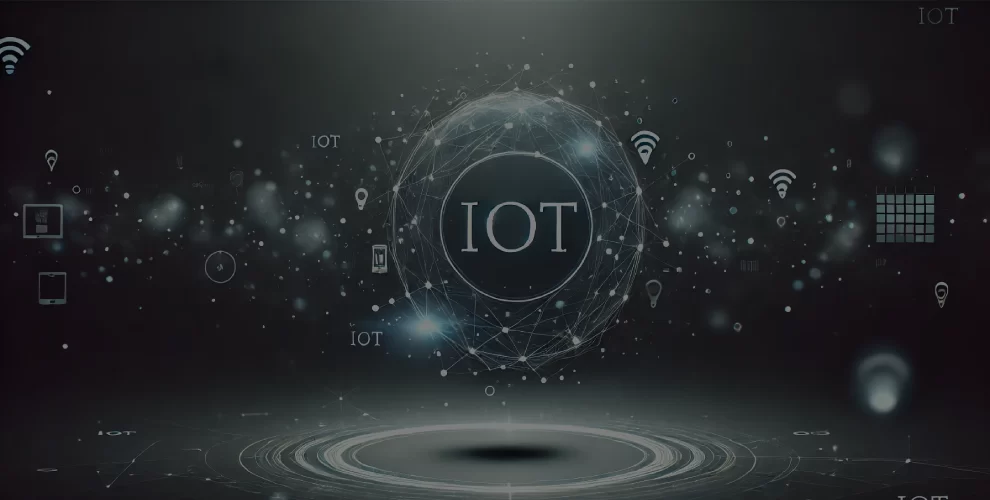
Top 10 IOT Trends to Watch in 2024
Table of Contents
Introduction
Welcome to WikiGlitz! The Internet of Things (IoT) continues to evolve, offering new possibilities and driving innovation across various sectors. As we step into 2024, it’s crucial to understand the latest IoT trends that are shaping the future. In this article, we’ll explore the top 10 IoT trends, emerging innovations, market predictions, and their potential impact on industries such as healthcare, manufacturing, agriculture, and smart cities.
Key Takeaways
- AI and IoT Integration: Discover how AI is enhancing IoT capabilities for smarter solutions.
- Edge Computing: Learn about the shift towards processing data closer to the source.
- Sustainability: Understand the role of IoT in promoting environmental sustainability.
AI and IoT Integration
Artificial Intelligence (AI) and the Internet of Things (IoT) are two powerful technologies that, when combined, create AIoT—an intelligent framework that enhances decision-making, automation, and efficiency.
AI algorithms process the vast amounts of data generated by IoT devices, enabling real-time analytics and smart automation. This integration leads to more responsive and adaptive systems.
Impact:
- Improved Decision-Making: AI analyzes IoT data to provide actionable insights, optimizing operations and resource management.
- Automation: AI-driven IoT systems can automate routine tasks, reducing human intervention and increasing efficiency.
- Predictive Capabilities: AI enhances predictive maintenance, allowing for proactive problem-solving and reduced downtime.
Edge Computing
Edge computing is gaining traction as it addresses the limitations of traditional cloud computing, such as latency, bandwidth constraints, and security concerns. By processing data at the edge, IoT devices can deliver faster and more efficient responses.
Benefits:
- Faster Response Times: Reduced latency ensures quicker data processing and real-time decision-making.
- Improved Data Security: Keeping data processing local reduces the risk of data breaches.
- Bandwidth Efficiency: Minimizes the amount of data that needs to be transmitted to central servers, saving bandwidth and reducing costs.
IoT Platforms
IoT platforms play a critical role in simplifying the deployment and management of IoT solutions. These platforms provide the necessary infrastructure, tools, and services to connect, manage, and secure IoT devices.
The trend towards specialized and integrated IoT platforms is growing, offering tailored solutions for specific industries and use cases.
Trends:
- Specialization: Platforms are becoming more specialized to cater to specific industry needs, such as healthcare, manufacturing, and agriculture.
- Integration with AI Tools: Many platforms now integrate AI and machine learning tools to enhance data analytics and automation capabilities.
- Enhanced Security Features: With the increasing number of connected devices, platforms are focusing on robust security measures to protect data and privacy.
Digital Twins
Digital twin technology creates real-time digital replicas of physical objects or processes. These virtual models allow businesses to monitor, diagnose, and optimize their operations more effectively.
By simulating real-world conditions, digital twins can predict potential issues, optimize performance, and provide valuable insights.
Applications:
- Optimizing Operations: Monitoring and adjusting processes in real-time to ensure optimal performance.
- Predictive Maintenance: Identifying potential problems before they occur, reducing downtime and maintenance costs.
- Scenario Testing: Simulating different scenarios to find the best solutions and strategies.
Augmented Reality (AR)
Augmented Reality (AR) is transforming how we interact with IoT devices by overlaying digital information onto the physical world.
AR can enhance user experiences and improve operational efficiency by providing real-time data visualization and interactive interfaces.
Advancements:
- New Interfaces: Developing intuitive AR interfaces for easier interaction with IoT devices.
- Real-Time Data Visualization: Displaying real-time data in context, improving decision-making and efficiency.
- Training and Maintenance: Using AR for training and maintenance by providing step-by-step instructions and visual aids.
Industrial IoT (IIoT)
Industrial IoT (IIoT) focuses on the use of IoT technology in industrial settings, such as manufacturing, logistics, and energy management.
IIoT enhances efficiency, reduces costs, and improves safety by providing real-time monitoring, automation, and data analytics.
Adoption:
- Monitoring and Automation: Implementing IoT sensors and devices to monitor equipment and automate processes.
- Predictive Maintenance: Using real-time data to predict and prevent equipment failures.
- Enhanced Safety: Monitoring environmental conditions and worker safety metrics to ensure a safer workplace.
Sustainability and Green IoT
Sustainability and green IoT focus on using IoT technology to promote environmental conservation and efficient resource management.
IoT devices can monitor and control energy usage, waste management, and other environmental factors to reduce the carbon footprint and enhance sustainability efforts.
Trends:
- Energy Monitoring: IoT sensors track energy consumption in real time, allowing for optimization and reduction of waste.
- Smart Agriculture: IoT-enabled precision farming techniques help in efficient water usage and reduce the use of harmful pesticides and fertilizers.
- Waste Management: Smart waste management systems optimize collection routes and recycling processes, minimizing environmental impact.
IoT Security
With the increasing number of connected devices, IoT security has become a significant concern. Ensuring the security and privacy of IoT systems is crucial to prevent data breaches and protect sensitive information.
Companies are focusing on developing robust security measures and protocols to address these challenges.
Challenges:
- Device Vulnerabilities: Ensuring that IoT devices have robust security measures in place.
- Regulatory Compliance: Adhering to regulations and standards to protect user data.
Solutions:
- Encryption: Implementing strong encryption protocols to secure data.
- Secure Authentication: Using advanced authentication methods to verify user and device identities.
- Regular Updates: Ensuring that devices and systems are regularly updated to patch vulnerabilities.
Hybrid Approach and Convergence
The hybrid approach and convergence in IoT involve combining different technologies and infrastructures to create more flexible and scalable solutions.
This approach allows businesses to leverage the strengths of various technologies and optimize their IoT implementations.
Concept:
- Combining Technologies: Integrating IoT with other technologies such as AI, blockchain, and edge computing.
- Flexible Solutions: Developing solutions that can adapt to changing needs and requirements.
- Cost-Effective: Reducing costs by optimizing the use of existing technologies and infrastructures.
Private vs. Public Networks
The choice between private and public IoT networks can significantly impact the performance and security of IoT deployments.
Private networks offer greater control and security, while public networks provide scalability and cost-effectiveness. Understanding the advantages and use cases of each can help businesses make informed decisions.
Comparison:
- Private Networks: Provide enhanced security, control, and reliability. Ideal for sensitive industrial applications where data integrity and security are paramount.
- Public Networks: Offer scalability and lower costs, making them suitable for consumer IoT applications and non-critical industrial uses.
Trends:
- Growing Adoption: Increased use of private networks in industrial settings for critical applications.
- Hybrid Solutions: Combining private and public networks to balance security, control, and scalability.
Future Outlook
As we look towards the future, the IoT landscape is poised for significant growth and innovation. Emerging trends such as AI integration, edge computing, and enhanced security measures will continue to drive the adoption and evolution of IoT technologies.
Predictions:
- Continued Growth: The number of IoT devices and their applications will keep expanding across various sectors.
- Advanced Analytics: Greater use of AI and machine learning to extract valuable insights from IoT data.
- Enhanced Interoperability: Development of standardized protocols to ensure seamless integration and communication between diverse IoT devices.
Impact:
- Healthcare: Improved patient care through advanced remote monitoring and smart medical devices.
- Manufacturing: Increased efficiency and reduced downtime with predictive maintenance and smart factories.
- Smart Cities: Enhanced quality of life through efficient resource management and improved public services.
Conclusion
The Internet of Things (IoT) is set to revolutionize various industries by providing innovative solutions and driving efficiency.
As we move into 2024, staying informed about the latest IoT trends is crucial for leveraging their full potential. From AI integration and edge computing to sustainability and security, these trends will shape the future of IoT and its applications.
Stay tuned to WikiGlitz for more insights and updates on the latest technology trends. We hope you found this guide informative and helpful in understanding the top IoT trends to watch in 2024.
FAQs
What is the future trend in IoT?
The future of IoT includes advancements in AI integration, edge computing, 5G connectivity, and sustainability, which will drive innovation and efficiency across various sectors.
Which is the future application of IoT?
Future applications of IoT span smart cities, industrial automation, healthcare, agriculture, retail, smart homes, and transportation, offering endless possibilities for innovation and efficiency.
What are the major technologies in IoT?
Key IoT technologies include sensors, Wi-Fi, Bluetooth, IoT platforms, cloud computing, edge computing, AI/ML, security measures, and blockchain, enabling comprehensive data collection, communication, processing, and secure transactions.
What are the four components of IoT?
The four key components of IoT are devices and sensors for data collection, connectivity for communication, data processing and analytics for deriving insights, and applications and services for leveraging IoT capabilities.
How will IoT benefit in the future?
IoT will benefit the future by improving efficiency, enhancing safety, providing advanced healthcare solutions, supporting smart cities, and enabling data-driven decision-making.
Want to keep up with our blog?
Our most valuable tips right inside your inbox, once per month.
Error: Contact form not found.
WikiGlitz Team
Welcome to WikiGlitz, your ultimate destination for tech insights and innovation. Our expert team is dedicated to delivering free resources and professional advice on various technology topics, including Artificial Intelligence, Cyber Security, Cloud Computing, and more. We strive to empower our readers with up-to-date information and practical guidance, ensuring you stay ahead in the rapidly evolving tech landscape. At WikiGlitz, we are passionate about making complex technology accessible to everyone. Our team of seasoned experts curates content that is both informative and engaging, helping you understand and leverage the latest tech trends. Whether you're a tech enthusiast or a professional, WikiGlitz is your go-to source for reliable, expert-driven content. Join us on this journey to explore and embrace the future of technology.


